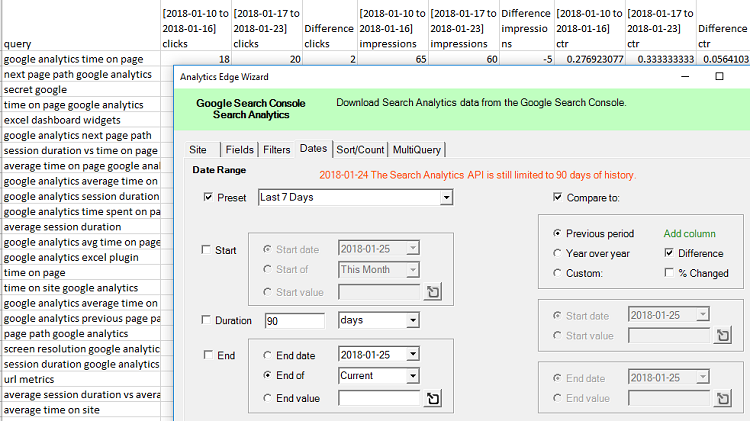Analytics Edge For Mac

PHOTO: IoT devices are aiding brands in their quest to gather data in new and inventive ways. But with to be in households and businesses across the world by 2025, brands face a data overload the likes of which they’ve never seen.
That’s why we’re seeing the emergence of edge analytics, a developing technology that we’ve asked industry experts to define and describe. What is Edge Analytics: A Summary In brief, edge analytics involves collecting and analyzing data at the sensor, device, or touch point itself rather than waiting for the data to be sent back to a cloud or on-premise server. Jessica Califano, Head of Marketing and Communications at NY-based, described edge analytics as “the process of collecting, analyzing, and making decisions based on the data from an IoT device within the same physical environment that generated the data.” According to Califano, “the cloud is not involved in the process of data analysis, and all of the work is carried out on embedded IoT devices.”. Kyle Bernhardy, CTO at Denver, CO.-based, further added to this and explained how edge analytics provides you with “the ability to create actionable insights in real-time directly from the IoT device(s) generating the data. For example, in manufacturing, this can have impacts on things ranging from quality control to safety.
Data can be collected and analyzed directly on the edge and acted upon in real-time.” Related Article: What is the Difference Between Edge Analytics and Edge Computing? According to Bernhardy, and edge analytics are not exclusive of each other, rather they are two sides of the same coin.
“Edge computing is using devices strictly to act as computers to log events, performing inter-device communication and tracking location. Edge analytics is leveraging that same device or devices and utilizing them to process the data that has been computed and turn it into actionable information directly on that device,” said Bernhardy. But while edge computing is able to perform some analytical functions, edge analytics goes a step further, as explained by Paul Butterworth, Co-founder and CTO of Walnut Creek, CA.-based. “Edge analytics takes edge computing to the next level by collecting more data at the edge and applying more complex analysis to it,” explained Butterworth. He continued with an example of a machine voltage sensor leveraging edge analytics. “Edge computing might apply an algorithm that turns off a machine if a sensor indicates the power supply is not providing the necessary voltage based on the last two or three sensor readings.
Similarly, edge analytics might perform long-term analysis of voltages collected over the last month and attempt to predict possible voltage anomalies in the near future,” he said. What Are The Benefits of Edge Analytics? John Crupi, VP of IoT Analytics at Irvine, Calif.-based described the advantage of edge analytics as two-fold. “First, obtaining real-time results from IoT devices for visualizations and insights.

Analytics Edge For Mac Pro

Second, dramatically reducing the amount of data which travels to the cloud,” he said. Crupi explained that this approach is especially important for “cost-conscious connections and overall bandwidth concerns, and is also highly valuable to real-time IoT analytics problems.” Naturally, as hundreds of millions of connected IoT devices get switched on around the world, it makes total sense to capitalize on the edge processing power as the first line of analytics to decrease costs and bandwidth. Furthermore, Crupi highlighted how the computational intelligence of edge analytics extends predictive capability by quickly turning data-based insights into actions. “This capability helps to anticipate and prevent asset failure and lowers maintenance costs dramatically,” Crupi stated. Bernhardy added that edge analytics brings added security for your data in comparison to centralized cloud providers.
“Data breaches are common when dealing with centralized cloud providers. Data can be intercepted over the wire, through a hack, or from a lack of security controls. With edge analytics, your data stays where you know it is controlled, within your own firewall,” said Bernhardy. Related Article: What Are The Limitations of Edge Analytics? Edge analytics is a relatively new technology. Bernhardy pointed out that not all the hardware is currently “capable of storing their data or performing complex processing and analytics.” However, we can expect hardware manufacturers to change that fact in the coming months and years.
Califano also asserts that, while there the architecture of edge computing isn’t “inherently bad”, there are two questions to consider before investing in edge analytics. “The first question to consider is whether or not it makes sense to invest in edge analytics for a given application? Generally speaking, it is best suited to scenarios that need to optimize for some combination of speed, efficiency, and security,” Califano said. “The second question is how to go about building an IoT application that contains some element of edge intelligence? Since we’re relatively early in the adoption lifecycle of edge computing architectures, there are a lot of practical hurdles that engineers (of all sorts) need to jump over along the way to successfully deploying an IoT application of this type,” he explained. What’s your take on the development of edge analytics? Share your thoughts in the comments section below.
Analytics Edge simplifies Excel report automation. Wizard-driven analytic functions and connectors can be combined to download and deliver report-ready numbers in seconds. Excel is loved for its flexibility and ease of use, and hated when it forces you to become a programmer. Designed for individuals working with Excel, the add-in keeps you in Excel but eliminates the frustrating aspects of working with complicated formulas; letting the computer do the work for you. So you can focus on your task, not the tool.